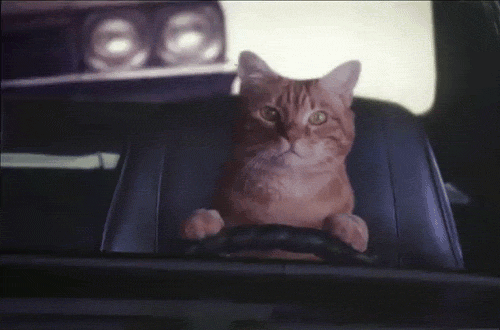How We Almost Lost on D-Day: Bradley's Excuse, Bradley's Promise
By Mike Sparks
We all admire great cars and great men; that's why we like James Bond's Aston-Martin full of weaponry/devices and read biographies/autobiographies--like 5-star General of the Armies Omar Bradley's A Soldiers' Life. In it, he reveals many dark secrets if you know where to look, and bright promises if we are bold enough to follow through on them to be great men ourselves--and not just praise the deeds of others in historical safety. We even see the genesis of the James Bond Aston-Martin in Hobart's Funnies; tanks with weaponry and combat engineering devices--both British inventions--in Bradley's account.
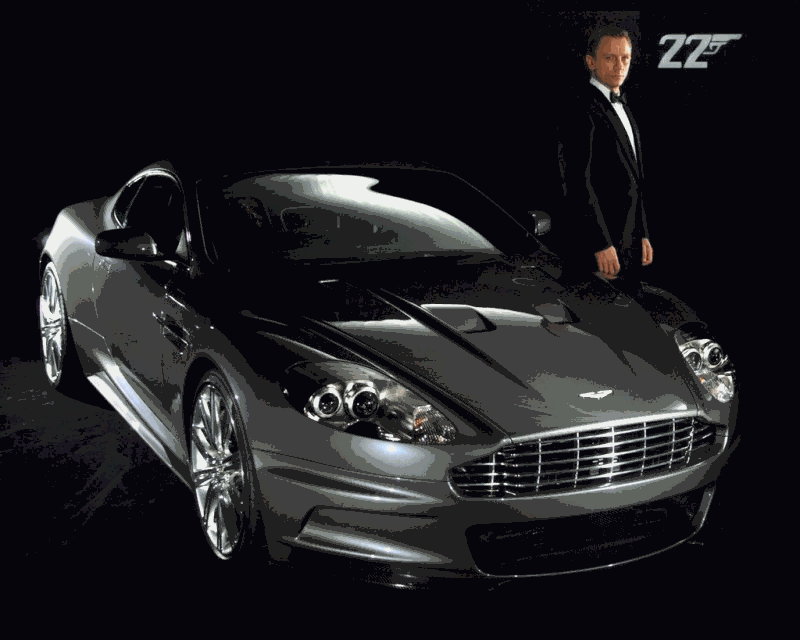
Generals Patton, Bradley, Hodges and Eisenhower
Pages 247-255:
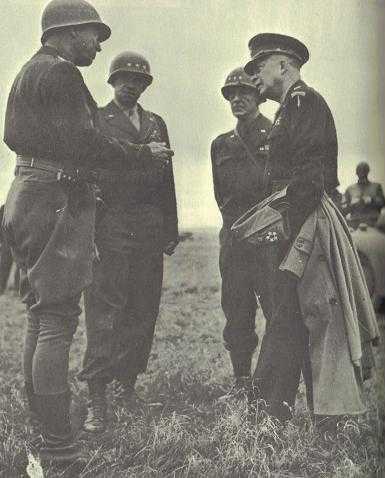
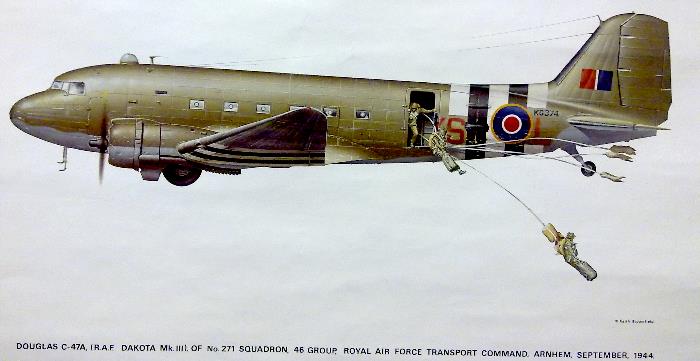
The first Allied troops to set foot on French soil were our airborne forces. They came in the dark and early hours by parachute and glider. There were 24,000 of them-16,000 American and 8,000 British-lifted by an armada of 1,000 aircraft. The American 82nd and 101st Airborne divisions were to land behind Utah Beach; the British 6th Airborne Division at key positions near Caen on the Orne River. Owing to the foul weather and the anxiety and inexperience of some transport pilots, most of the American Paratroopers were scattered far and wide of their objectives. Only a few units were able to organize and fight as planned. However, the sudden presence of 24,000 Paratroopers behind the Atlantic Wall in Normandy created immense confusion and fear among the German defenders, and that alone justified their employment. Many brave roving Paratroopers assembled into guerrilla bands and inflicted heavy casualties on the enemy on D-Day and thereafter. Some units or bands captured and valiantly held key objectives-bridges, roads, enemy strongpoints-greatly disrupting German countermeasures. Total American Paratrooper casualties were 2,500, or less than 15 percent, far less than the disastrous 50 to 70 percent predicted by Leigh-Mallory.
Next came the U.S. infantry at Omaha and Utah beaches. Sunrise was at 0558; H-hour at 0630.
As we faced France, Utah Beach-Joe Collins' VII Corps objective -lay to our right, or west. At 0405, in utter darkness, the men of Ray Barton's unblooded 4th Division began climbing into the landing craft, the gallant Teddy Roosevelt in the lead. Because of our fear of big German coastal artillery, the landing craft were launched eleven and a half miles from the beach! In the vanguard was a wave of eight LCT's transporting thirty-two new "secret weapons" on which we were counting heavily. These were Sherman tanks equipped with flotation gear and a boat screw somewhat akin to our "duck" trucks. They were to be launched at sea and "swim" ashore, to provide our troops instant "artillery" on the beach. Later, additional DD's would be landed directly on the beach by LST's.*
DD Amphibious Sherman Medium Tank
As the landing craft embarked on the long, fearful trip to Utah Beach, air and naval forces commenced a softening up of the beach fortifications. Some 360 American medium bombers attacked Utah Beach, but the heavy overcast thwarted their aim. Official-Army historian Gordon A. Harrison reported accurately that "on the whole the bombing achieved little." The naval warships standing off Utah Beach opened fire at 0536 and for fifty minutes blasted the enemy fortifications with every gun that would reach. Rocket-equipped LCT's delivered 5,000 five-inch rockets onto the beaches just ahead of the leading boat wave. The naval bombardment at Utah was highly effective, naval historian Morison wrote. During the remainder of the day, warships continued to fire at targets of opportunity. The aged [battleship USS] Nevada even destroyed a group of German tanks.
The invasion force at Utah Beach was lucky in one respect. As the landing craft neared the shore, they fell in the lee of Cape Barfleur. Closer to shore, where the DD's were to be launched, the water was less rough. The DD's rolled off the LCT's and plopped into the water without foundering. One LCT struck a mine, blew up and sank with its four DD's, but the other twenty-eight DD's swam ashore without undue difficulty. Swarms of ducks carrying 105mm artillery also had the advantage of relatively calm water. Thus, the assault waves at Utah Beach were backed by both tanks and artillery.
Utah Beach was defended by one regiment of the German 709th Division, a "static" (non-mobile) outfit composed of reservists and foreign volunteers, many of them anti-Communist Russians from the Republic of Georgia. American Paratroopers inland had cut their communication lines and they were unable to sound an alert. They effectively raked the landing craft that came into their field-of-fire, but quickly surrendered in close combat. By a lucky accident, the Navy put our infantry ashore on the wrong beach, beyond reach of the most telling enemy gun emplacements. Led by Teddy Roosevelt, the initial waves of infantry quickly readjusted to the mistake, overwhelmed the lackluster defenders and struck inland to link up with some Paratroopers who were holding key positions. By the end of the day, 23,000 men had landed at Utah Beach. The 4th Division
________________________________________________________
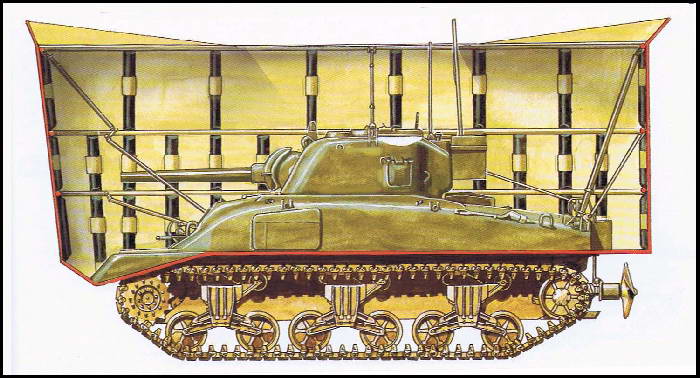
 youtube.com/watch?v=4njAvCleiXM
youtube.com/watch?v=4njAvCleiXM
* The DD's had been conceived by an engineer, Nicholas Straussler, and enthusiastically embraced by British tanker pioneer Percy Hobart. After Ike and I had tested the DD's, we were also enthusiastic and ordered some 300 new Shermans converted to DD's. Hobart had also conceived and offered to us several other "funny tanks" for special uses: the "crab," equipped with flailing arms to beat paths through minefields; the "crocodile," equipped with a flamethrower; and the ARVE, a multipurpose tank that could be fitted with a mortar or small bridge-laying equipment or fascines for filling tank traps. All the "funnies" except the crab were converted British Churchill tanks. Since accepting the Churchills would require retraining our tank operators and maintenance men and a complicated separate supply chain for spare parts, we declined. Had the "funnies" been conceived earlier, in time to adapt their gadgetry to Sherman tanks, we would have probably made use of them.
________________________________________________________
had pushed six miles inland. Casualties were gratifyingly light: 197. Utah Beach was a piece-of-cake.
Omaha Beach, however, was a nightmare. Even now it brings pain to recall what happened there on June 6, 1944. I have returned many times to honor the valiant men who died on that beach. They should never be forgotten. Nor should those who lived to carry the day by the slimmest of margins. Every man who set foot on Omaha Beach that day was a hero.
Fearing enemy shore batteries, our invasion fleet anchored twelve miles off the coast. One of these rumored coastal batteries, on Pointe du Hoe, was of gravest concern. French intelligence agents had reported it consisted of six French 155mm guns with a range of 25,000 yards (about twelve nautical miles). We had assigned two Ranger battalions under Lieu-tenant Colonel James E. Rudder, a Texas rancher, to land, scale the high cliffs and destroy the guns. Rudder's men would be supported by destroyers operating close to the beach. His mission was deemed vital. Properly manned, those six monstrous guns by themselves could fatally wreck our invasion forces.
In our open roadstead, we were exposed to the full fury of the boisterous channel weather. Waves three to six feet slapped at the warships and transports. The launching of landing craft in total darkness was difficult and perilous. Climbing into those bobbing craft with heavy gear, our infantrymen were soon miserable: wet, cold and seasick. The sixteen LCT's carrying the sixty-four DD tanks to the east and west beach sectors wallowed heavily and clumsily in the seas. The seamen in charge of landing the west sector's thirty-two DD's wisely decided it was too rough to launch at sea and landed twenty-eight directly on the beach. But twenty-nine of the thirty-two east sector DD's were launched two and a half miles off the beach. All but two foundered in heavy seas. Three others were landed directly on the beach, for a total of five. Most of the dozens of ducks transporting the 105mm artillery likewise foundered. Result: only half the DD's and a few artillery pieces reached Omaha Beach.
[EDITOR: this is why more powerful waterjet propulsion is necessary for ship-to-shore amtracks in order to press forward against possible waves]
The naval and air forces commenced softening up the beach at 0550. First came the terrific (and reassuring) salvos from the warships. This bombardment went on for a solid thirty-five minutes. During it, commencing at 0600, some 480 U.S. B-24 heavy bombers dropped 1,285 tons (2.5 million pounds) of bombs. Historian Morison judged that the naval bombardment, though brief, was highly effective, probably reducing enemy resistance by "half to three quarters."
USS Nevada firing off Utah beach
The aerial bombardment, as at Utah Beach, was completely ineffective. Owing in part to poor flying weather, the 2.5 million pounds of bombs fell inland of Omaha Beach, killing some French civilians and many cattle, but few Germans.
Omaha Beach was normally defended by a regiment of the static 716th German Division, which was no better than the German regiment at Utah Beach. But, as I mentioned, the 716th had been reinforced by elements of the crack mobile 352nd Division, one regiment at the beach defenses, two regiments only a few miles away at Bayeux. The regiment of the static 716th Division at Omaha Beach had actually been incorporated into the command structure of the 352nd Division. Thus at Omaha Beach, we faced better than two regiments of German troops, many of them first-line.
The beach fortifications and terrain were formidable. There were three well-placed rows of underwater steel or concrete obstacles, most of them mined. At low tide-when we intended to land the assault forces-the beach itself was two hundred yards wide with no cover. Then came a low seawall. Beyond that were sand dunes and bluffs, slashed by five widely spaced draws which we intended to use as exit roads from the beach. All the draws were heavily covered by enemy gun emplacements, and the area between the seawall and cliffs and dunes was sown with thousands of mines. In addition, the Germans had cleverly concealed concrete gun emplacements in the bluffs so as to enfilade almost the entire length of the beach.
Omaha Beach, then, was truly an Atlantic Wall. Historian Morison wrote: "
At 0630, the first waves of Gerow's V Corps infantry hit Omaha Beach, most in the wrong places. These were assault elements of the 116th Regiment of Charles Gerhardt's 29th Division and the 16th Regiment of Huebner's Big Red One, plus specially-trained [foot-mobile] engineers to blow the underwater obstacles. All men instantly came under a hurricane of enemy machine-gun, mortar and artillery fire. Dozens died or fell wounded, many drowning in the sea. A majority of the demolition engineers became instant casualties, although a few managed to blow several paths through the underwater obstacles. There was no cover. The men lay in the sand or shallow water, unable to return fire, or crouched behind stranded landing craft. Most of the DD's were knocked out. There was no artillery. For several hours, the beach and the water just beyond was a bloody chaos.
We were fortunate in some respects. The Luftwaffe in Normandy had been utterly crushed or forced to retreat to distant bases. We had complete air supremacy. No German aircraft interfered in any significant way with our operations at Utah and Omaha beaches on . Nor did the German Navy. Some U- and E-boats were ordered to attack us, but these were deflected with ease. Nor were the V-1s or V-2s ready in time. None was fired against us. Rudder's Rangers-in one of the great heroic feats of the war scaled the Pointe du Hoe cliffs and found the six monstrous guns there were dummies-telephone poles! Later, Rudder's men located four of the six guns in a field behind the point and spiked them with grenades. Omaha Beach remained a bloodbath for too long. Six hours after the landings, we held only ten yards of beach. Not until the principal commanders got ashore did the men begin to move toward the cover of the seawall and bluffs. These gallant officers were Brigadier General Norman D. Cota, assistant division commander of the 29th (a good friend and onetime member of my weapons section at Fort Benning); Colonel Charles D. W. Canham, commanding the 116th Infantry; and Colonel George A. Taylor, commanding the 16th Infantry. Cota was a fearless example to every man on the beach as he calmly strode about giving sensible orders. Taylor shouted to his men, "They're killing us here! Let's move inland and get killed!" Cota yelled, "Two kinds of people are staying on this beach, the dead and those who are going to die. Now let's get the hell out of here." Men who were able dashed for the seawall through murderous fire. Hundreds more Soldiers of the 18th and 115th Infantry came behind, disgorging from the landing craft. Everywhere courage and valor were commonplace. Slowly, almost imperceptibly, our foothold increased.
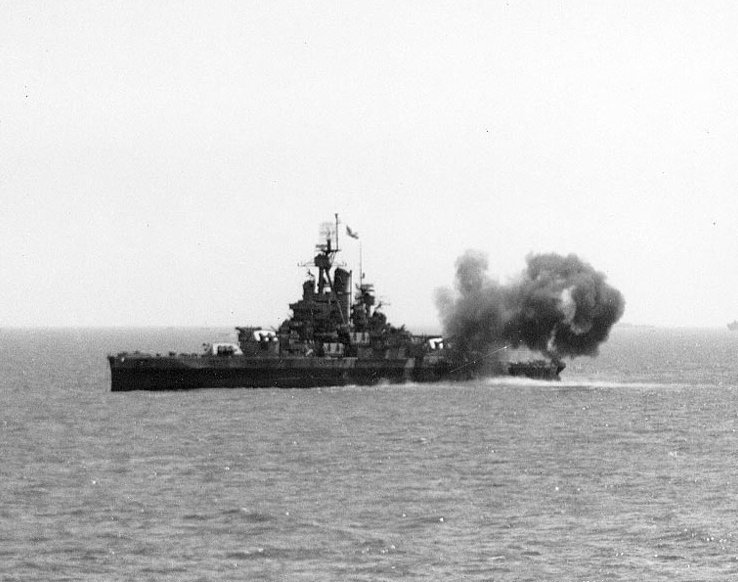
USN destroyers saved the day at Omaha Beach
Here I must give unstinting praise to the U.S. Navy. As on Sicily, the Navy saved our hides. Twelve destroyers moved in close to the beach, heedless of shallow water, mines, enemy fire and other obstacles, to give us close support. The main batteries of these gallant ships became our sole artillery. Huebner's chief of staff, Stanhope B. Mason, later wrote, "I am now firmly convinced that our supporting naval fire got us in; that without that gunfire we positively could not have crossed the beaches." When he got ashore that night to establish his V Corps command posts, Gee Gerow's first message to me was emotional: "Thank God for the U.S. Navy!"
The whole of D-Day was for me a time of grave personal anxiety and frustration. I was stuck on the Augusta. Our communications with the forces assaulting Omaha Beach were thin-to-nonexistent. From the few radio messages that we overheard and the firsthand reports of observers in small craft reconnoitering close to shore, I gained the impression that our forces had suffered an irreversible catastrophe, that there was little hope we could force the beach. Privately, I considered evacuating the beach-head and directing the follow-up troops to Utah Beach or the British beaches. Chet Hansen recorded that I later remarked to Monty, "Someday I'll tell General Eisenhower just how close it was those first few hours." I agonized over the withdrawal decision, praying that our men could hang on.
They did-barely. Then at 1:30 P.M. I received a heartening message from Gerow: "Troops formerly pinned down on beaches...advancing up heights behind beaches." I sent my chief of staff, Bill Kean, and Chet Hansen to the beach for a firsthand look. Their report was more optimistic than I dared hope for. The situation everywhere on the beach was still grave, but our troops had forced one or two of the draws and were inching inland. Based on their report, I gave up any thought of abandoning Omaha Beach.
By nightfall, the situation had swung in our favor. Personal heroism and the U.S. Navy had carried the day. We had by then landed close to 35,000 men and held a sliver of corpse-littered beach five miles long and about one and a half miles deep. To wrest that sliver from the enemy had cost us possibly 2,500 casualties. (No exact accounting has ever been arrived at.) There was now no thought of giving it back.
I had often agonized over assigning green troops to spearhead the Omaha Beach assault: Gerow and his V Corps headquarters, Gerhardt and his 29th Division. That was why I had made the decision to add elements of Huebner's battle-hardened Big Red One. As in the Sicily assault, the Big Red One once more bore the brunt of the enemy's fury. But I thanked God the division was there.
In the British sector, owing to reefs and foul ground, Monty's Second Army under Miles Dempsey had to land on a flood tide an hour to an hour and a half after we landed. This gift of time enabled the warships of the Royal Navy to deliver Monty's beaches a two-hour daylight bombardment, nearly four times as long as the naval bombardment at Omaha. To this was added a massive attack by British heavy bombers. The combined sea and air attacks in the British sector were far more effective than those in the American sector.
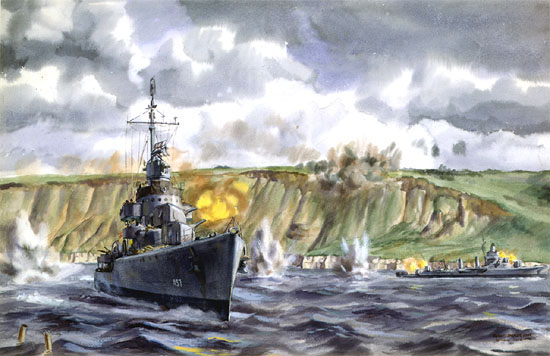
Dempsey had three divisions to our two, and thus three landing beaches. These were, from west to east: Gold, Juno and Sword. Each of these three British landings was far less arduous and bloody than Omaha. The British sector was defended by men of the 716th Division, composed of many Poles and Ukrainians. The British 50th Division, landing its DD's on Gold Beach, quickly overran the lackluster defenses, pushed four miles inland, but failed to reach its objective, Bayeux. In the center, the Canadian 3rd Division, at Juno Beach, lost eight DD's in rough seas, but the assault forces overran the defenses and also penetrated about four miles inland. Some Canadian armored patrols reached the vital Bayeux- /Caen road. At Sword, the British 3rd Division lost twenty-eight of its forty DD's in pitching seas, but the remaining twelve knocked out German gun positions on the beach, enabling the division to overrun the enemy. The division also pushed four miles inland, linking up with the British 6th Parachute Division along the Orne River, but it failed to take its objective, Caen. In sum, Dempsey landed 75,000 British and Canadian troops and 8,000 Paratroopers on. He suffered about 3,000 casualties, one-third of these Canadians.
Fortunately, German reaction to our invasion was confused, indecisive and obstructed by bureaucratic red tape. None of the top German commanders expected an invasion in such poor weather. In fact, Rommel had gone to his home in Germany to visit his wife on her birthday. Most of the German Seventh Army division commanders were at Rennes for war games. Of the senior German commanders, only von Rundstedt was at his command post.
When word of the widespread airborne assault reached von Rundstedt in the early hours, he realized at once that something out of the ordinary was afoot. Whether or not it was the real invasion or a Dieppe-like hit-and-run operation was immaterial to him. He perceived that so large-scale an airborne operation would require a substantial amphibious assault for link-up. He at once placed all German troops in Normandy on "highest alert." He correctly guessed that Caen was the logical target for the amphibious assault. He ordered Rommel's 21st Panzer Division, near Caen, to move up and repulse any attackers.
At the same time, still in the early hours, he ordered two divisions of the 1st SS Panzer Corps near Chartres to prepare to move toward Caen. These were the 12th SS (sixty-five miles from Caen) and the Lehr Panzer Division (eighty-five miles from Caen). These two panzer divisions would give von Rundstedt a total of three to repel the invaders on the beaches. But bureaucratic indifference and stupidity thwarted him. Berlin Army headquarters refused von Rundstedt permission to commit these divisions without Hitler's direct approval. Hitler, away at his Bavarian mountain retreat, Berchtesgaden, had stayed up late the night before. No one dared wake him up. Von Rundstedt had full authority to call Hitler direct, but he declined to do so. Twelve crucial hours ticked by. Not until four o'clock on afternoon did von Rundstedt receive permission to bring up the other two panzer divisions. By that time the skies had cleared and Allied air was overhead in force, compelling the Germans to postpone movement of the divisions until nightfall, when Allied air was blind.
That left only the 21st Panzer Division to deal with the British and Canadian forces advancing on Caen. In Rommel's absence, his chief of staff, Hans Speidel, directed its operations on . He assigned half its infantry to fight the British airborne troops on the east side of the Orne River, the other half to support the 116th Division in beach defense. At noon, he ordered the division to regroup and cross the Orne to the west and position itself due north of Caen to attack the oncoming British and Canadians. Owing to the congestion in Caen and the lack of bridges, the division did not reach attack position until four o'clock in the afternoon. The attack-the only large-scale German counterattack on -was met by the British 3rd Division and it failed. But the panzers dug in and denied the British Caen.
A bolder, faster thrust by the British 3rd and the Canadian 3rd Division would certainly have gained Caen and, with the help of the 6th Parachute Division, might have led to encirclement and annihilation of the 21st Panzer Division. Historian Liddell Hart blamed the missed opportunity on "the excessive caution of the commanders on the spot-at a time when there was hardly anything to stop them." [5]
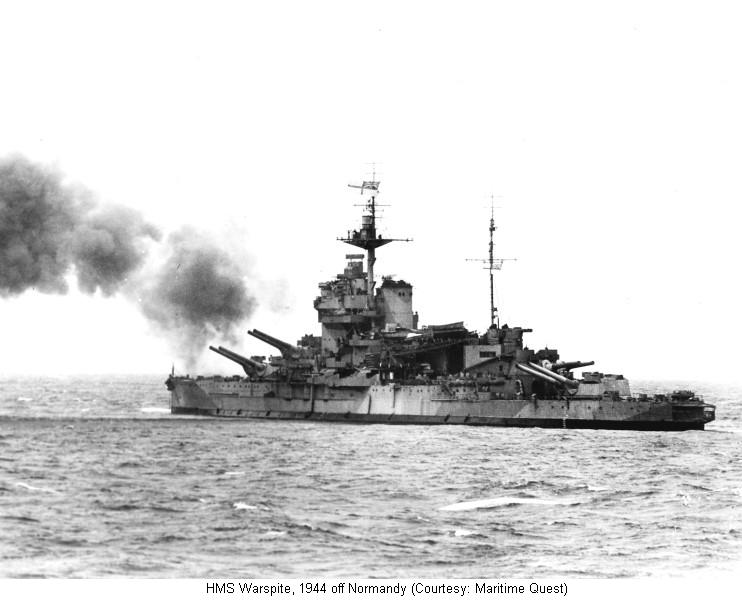
Bradley's Excuse
"The DD's had been conceived by an engineer, Nicholas Straussler, and enthusiastically embraced by British tanker pioneer Percy Hobart. After Ike and I had tested the DD's, we were also enthusiastic and ordered some 300 new Shermans converted to DD's. Hobart had also conceived and offered to us several other 'funny tanks' for special uses: the 'crab,' equipped with flailing arms to beat paths through minefields; the 'crocodile,' equipped with a flamethrower; and the ARVE, a multipurpose tank that could be fitted with a mortar or small bridge-laying equipment or fascines for filling tank traps. All the 'funnies' except the crab were converted British Churchill tanks. Since accepting the Churchills would require retraining our tank operators and maintenance men and a complicated separate supply chain for spare parts, we declined. Had the "funnies" been conceived earlier, in time to adapt their gadgetry to Sherman tanks, we would have probably made use of them."
Hollywood has done a great service to the memory of D-DAY in its two movies, The Longest Day and Saving Private Ryan by showing how on Omaha beach thousands of our men on foot were devastated by enemy fire and pinned down, only overcoming by extreme heroism to place explosive charges to blast their way through. However, Hollywood has also done us a disservice because it has created a false mythology that all infantry needs to do is be heroic and any and all obstacles and enemy fire can be overcome. It didn't save the millions who died in WW1's trenches, it didn't work for the Dieppe raiders two years before, it didn't give victory to the many North Korean and CHICOM human wave attacks in Korea and it didn't stop us from foiling many a Viet Cong/NVA sapper-led attacks against our fortified bases in Vietnam. In short, we came within an ace of losing Omaha beach on June 6, 1944 in the same way. What was the difference?
The U.S. Navy's battleship, cruiser and destroyer guns.
You will recall, that CG of the V Corps General Gerow said: "Thank God for the U.S. Navy".
Yet, you will probably not see any Hollywood movie on naval guns saving the landings--even though they did. Moreover, the aircraft carrier mafia-run USN has seen to it that we don't have naval guns like what we had on . As you saw from Bradley's account, naval guns--not Saving Private Ryan infantry saved the day on Omaha's beaches. Don't hold your breath that the aircraft carrier "mafia" USN will put any of our 4 Iowa class battleships back in service.
In fact, the USN surface ship vulnerability they deny exists was even at work in WW2! Bradley reports the USN parked its amphibious transport ships 12 MILES away from the beaches to stay out of enemy 155mm gun range. Today it's going to be 25 MILES to be completely over-the-horizon (OTH).
To compensate for today's USN's lack of Get-It-Drive-On (GIDO) competence to create a sound formula for naval warfare and absent Fuck-It-Drive-On (FIDO) coourage, the Navy/marines have absurdly turned towards noisy and fragile LCAC hovercraft which can fly over sea mines at 8 feet (good) but will not survive even the lightest enemy infantry fires near and on the beach since we have not enough naval gunfire and rocketfire support these days to clear them of gunmen. Bradley notes that what saved Utah and Commonwealth beaches were swimming DD tanks, and on shore, Percy Hobart's combat engineering "sapper tanks". However, the USMC rifleman narcissist bureaucracy will not invest in a swimming big gun fire support tank let alone a whole family of Hobart's Funnies to do amphibious warfare properly. Nor has the U.S. Army--even though it has more landing craft than either the Navy or Mc since it has the Joint Logistics Over-The-Shore (JLOTS) mission and it would help their strategic maneuver. The USMC is pursuing a fast water speed infantry-carrying tank, the Expeditionary Fighting Vehicle (EFV) but it's going to just strike enemy sea mines that much faster. In short, the USMC has wankered up amphibious warfare:
www.combatreform.org/britainpioneeredamphibiouswarfareNOTtheUSMC.htm
The high-technology German defenses on D-Day were far more hardened and lethal than anything the USMC faced in the Pacific against the low-tech Japanese. This is the face of modern warfare and the USMC is simply not up to the job today--if it ever was. The U.S. Army is better towards making use of mechanical advantage, but not by much. There is a rampant anti-mechanizing gene in America's ground forces, what I call "The Bradley Excuse".
Bradley said: "Since accepting the Churchills would require retraining our tank operators and maintenance men and a complicated separate supply chain for spare parts, we declined"
Notice the BS excuse of infantryman Bradley, that IT WOULD BE SOMEHOW TOO HARD TO RETRAIN AMERICANS TO OPERATE BRITISH CHURCHILL TANKS WITH THE NECESSARY COMBAT ENGINEERING DEVICES. So we rejected General Hobart's offer of his funny tanks.
Result is we ALMOST lose Omaha beach--and we almost lose WW2. Bradley himself earlier stated that if D-Day failed:
Page 238
As a result of information gained from Ultra and Magic, as well as aerial reconnaissance and other sources, we were extraordinarily well informed about the enemy, his probable intentions, his power and weapons and his weaknesses and vulnerabilities. Seldom in history has an opposing army known so much about its opponent.
This was the general picture we had. Hitler was hard-pressed on the Russian front; Italy was a drain on his resources. OVERLORD represented both his greatest danger and his greatest opportunity. If the OVERLORD forces could be repulsed and trounced decisively on the beaches, Hitler knew it would be a very long time indeed before the Allies tried it again- if ever. A decisive victory on the beaches of France would free fifty German divisions for the Russian front, enough force, perhaps, to check the Soviet drive and turn encroaching disaster into a German triumph. The Third Reich might yet prevail.
Hitler's dream of a decisive victory in the west was based, in part, on exaggerated faith in two new "wonder weapons": the V-1 cruise missile or flying bomb, and the much more sophisticated V-2 ballistic missile. After repulsing OVERLORD, he would saturate England with these missiles, preventing another cross-channel buildup and sapping our will to continue the war. Foreign agents and Ultra had revealed to British intelligence a good deal about these weapons and where they were being developed and tested. Photo reconnaissance then pinpointed the sites.
 youtube.com/watch?v=rrmNfz4X5GY
youtube.com/watch?v=rrmNfz4X5GY
Behind the scenes in England, the discovery of these weapons had caused gravest concern. Like Hitler, we greatly exaggerated in our minds their anticipated effectiveness and reliability. Extraordinary measures were taken to stop their development. For example, on a night in August 1943, the British Bomber Command staged a 600-plane raid on the V-2 development site at Peenemunde, an isolated town on the German Baltic coast. When "ski ramp" V-1 launching sites were discovered in the Dieppe-Calais-Cherbourg areas, a great deal of OVERLORD air power was diverted to destroy them. In all, some 40,000 tons of bombs had been expended against the wonder weapons, delaying operational deployment of both beyond , for which we were all very grateful.
We were not yet done with these weapons, however. We learned from Ultra and other sources that a slew of simplified hard-to-spot V-1 launching sites...
Bradley flip-flops from a Luddite "it ain't a technological threat" to a "we are sure glad they were taken out because-they-were-a-threat" mentality. Which is it? Are the German V weapons a threat or not? It's non-sense that American tankers and mechanics couldn't when it's a life or death situation--operate British tanks. The British learned how to operate our Grant, Sherman and other tanks via On-the-Job-Training (OJT), so could we. They even improved them with 17-pounder anti-tank guns and sapper devices before war's end. What are we doing? Getting dates with Rita Hayworth? The next excuse that we couldn't supply Churchill tanks with spare parts is more utter bullshit; if there was ANY country on planet Earth with the industrial capacity to rapidly take engineer drawings and make them into real objects, it's the United States of America. In fact, it would HELP THE BRITISH maintain their force of Churchill medium tanks.
You might say, "so what" yadda yadda. To hell you say.
Fast forward to 1999.
We are in an auditorium in Ypsilanti, Michigan and we are hearing a briefing by a Colonel Donald F. Schenk, a yes-man toad of U.S., Army Chief of Staff General Eric Shinseki lecturing us on how "the new Interim Armored Vehicle will need to be of one type so we can save money and simplify logistics". When confronted with the fact that WE ALREADY HAVE THOUSANDS OF M113 GAVINS IN ARMY SERVICE that can be a base platform for a combined-arms team to include Sapper tank features--so we could save monies and put them towards MORE CAPABILITIES---Schenk bullshitted us. The fix was in; the Army bureaucracy had already decided to buy inferior wheeled LAV-III vehicles--logistical facts be damned--so they could squeeze maximum $$$ from Congress. We were there to PRETEND like they were actually interested in looking at all the options and choosing what was best. Dictator Shinseki had already decided and we were the white wash. That's what happens when your army is a BUREAUCRACY and NOT A PROFESSION: professional FACTS and opinions do not count. All that counts is giving the boss what he wants. If your boss is incompetent about armored vehicle design like Shinseki, your whole organization suffers the consequences. This is why we need a COMBAT COLLEGE from the beginning shown every Army Soldier what high explosives (HE), kinetic energy (KE) and other weapons can do and what we can do AND NOT DO--to defeat them with fortifications and armored mobility.
www.combatreform.org/combatcollege.htm
Nevermind, the thousands of dead and burned up, maimed Soldiers riding these road-bound deathtraps into land mines in Iraq/Afghanistan. The dirty secret in-house secret I learned as a young USMC officer was that wheeled LAVs cannot get off many sandy beaches and get stuck. So while the USMC publicly bullshits everyone "how great their LAV-1s are", they insist the EFV must be tracked--for good reasons.
Strykers
So DO NOT TELL ME the "Bradley excuse" anti-mechanized, bureaucratic bias is passe' and old history. It's current events and real-world tragedy in action TODAY and for our near future. Paradoxically, American society is completely oil-power mechanized to a fault keeping the Rockefeller Illuminati families rich--we should move by high-speed trains and avoid 50, 000 people dying in car crashes each year--which happens without any Iwo Jima monuments to them. They are just as dead, and I dare say just as heroic...raising families as the gyrene narcissist placing a needless flag on top of a mountain for a photo op for bureaucratic glory. Yet, in the USMIL's ground forces we have an inherent bias against mechanization owing to our bureaucratic laziness and desire to live a simple "From Here to Eternity" garrison lifestyle of petty harassment and after-hours drinking and skirt chasing that vehicle maintenance could possibly get in the way of. If the vehicle is a lemon like the LAV-III/Stryker it means a built-in excuse to not go fight or do anything while sucking down the maximum dollars from the tax payers as CIVILIAN CONTRACTORS DO THE LION'S SHARE OF THE WORK so our boys are free to do the James Jones thing. So for all the TALK about "saving money" with wheeled LAV-III/Strykers, the M113 Gavin tracks we already have are far cheaper to operate and more combat capable with all the armaments and devices required--but this stands against the Dixonian emasculation psychology and bureaucratic urge to waste money and do nothing. Nobody wants to participate in a war and lose life and limbs, but it's our DUTY to do it WELL and win the wars as fast as possible-not prolong them to make greedy corporations and bureaucrats rich.
Bradley earlier in his life's story describes how half the day was free in the simpler Army of the 1920s/30s to goof off and he at times saw no problem with West Point underclassman style hazing in the ranks "to harden the troops". Compare James Jones' 25th Infantry in Hawaii to today's "Tropic Lightning" and you will be horrified--the same foot slogging and truck hopping, but sugar-coated with electronic gadgetry. In between these times of incompetence, the fathers of today's Lightfighters survived and prevailed in the closed terrain of Vietnam thanks to their M113 Gavin light tracked tanks' cross-country mobility, so why there is no excuse why they cannot do it today in high-technology models with v-hull anti-landmine shaping, RPG protective applique' armors, hybrid-electric drive and band-tracked stealth with all sorts of firepower and mechanical advantage gadgetry.
After all, BRADLEY PROMISED WE WOULD DO IT IF WE HAD A COMMON CHASSIS TO DO IT WITH.
Bradley's Promise
"Had the 'funnies' been conceived earlier, in time to adapt their gadgetry to Sherman tanks, we would have probably made use of them."
We have the time now. We also have that "Sherman tank" common chassis today with
which to employ the Hobart's Funny devices; it's called the M113 Gavin.
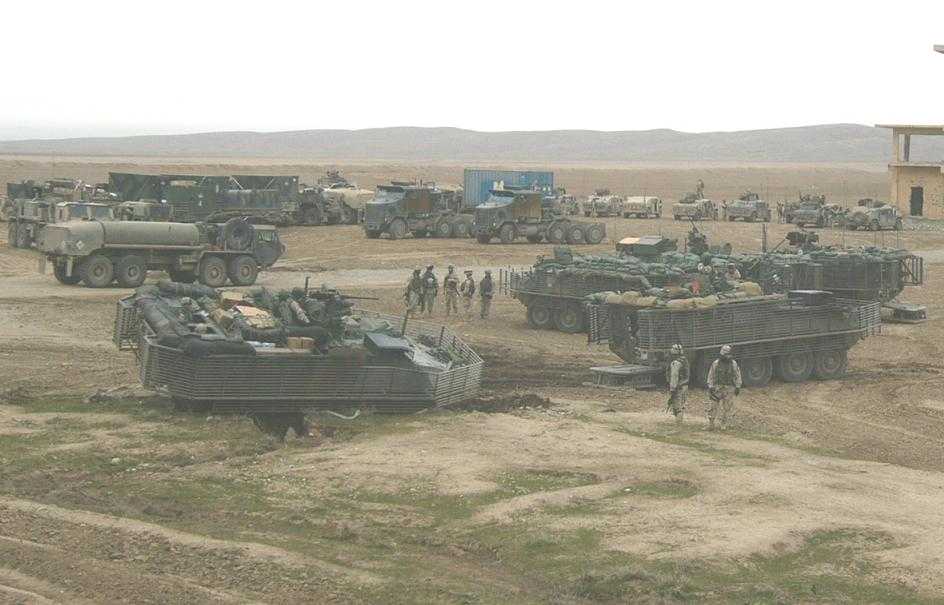
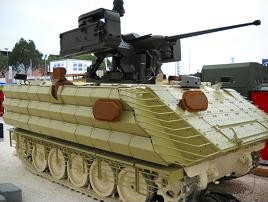
What's our bureaucratic excuse now?
I don't want to hear it. The GCV--v-hull shaped FCS replacement will be no more affordable at $10M each 10 years from now than it was now when we cancelled its flat-bottomed FCS predecessor. While Army branch heavy tankers suck down the bait that they have future new tanks to operate, the light infantry narcissists who want to foot slog and play "From Here to Eternity" switch out one of their Brigades each year into $4M each Stryker trucks. In about a decade, the entire U.S. Army will be completely road and trail bound--and ruined--unable to fight and win wars. If you think this is not by accident or just from weak Army psychology and culture, think again. The Army bureaucracy praises people like the German Rommel and our own Patton for initiative while doing everything they can today to slam the door in the faces of today's innovative leaders.
 scribd.com/doc/124633824/MR-D-Day-Rommel-Patton-and-Initiative
scribd.com/doc/124633824/MR-D-Day-Rommel-Patton-and-Initiative
The CIA Prolongs Wars and Murders our Troops--its Treachery Dates back to it's AmeroNazi WW2 Origins
Bradley also reveals another bombshell in his book; Assistant Secretary of War John McCloy was placed in charge of the ULTRA intercepts after Pearl Harbor.
Pages 236-237
In North Africa and Sicily, we had been entirely dependent on the British for Ultra intelligence. It was encoded and radioed from the British code-breaking center at Bletchley Park in England to British specialists in the field attached to higher headquarters. However, in the summer of 1943, the British agreed to give the Americans wider access to Ultra. One provision of this agreement specified that our armies and air forces could have American "Ultra representatives" who would receive the raw Ultra data from Bletchley Park, interpret it and brief the top American commanders.
The responsibility for recruiting and training these American Ultra "reps" fell to a hush-hush outfit: Special Branch of Army G-2 in Washington. John McCloy had created the Special Branch after Pearl Harbor to better analyze and distribute the Magic and other intelligence we were getting from breaking Japanese diplomatic and military codes. McCloy chose an able Army intelligence specialist, Carter W. Clarke, to head Special Branch, and he recruited one of his former New York law partners. Alfred McCormack, to serve as Clarke's deputy. McCormack was instrumental in helping Clarke recruit an outstanding staff for Special Branch. Many were lawyers or investment bankers; nine were, like McCormack, Princeton graduates.
Clarke delegated to one of these bright recruits, attorney Telford Taylor (after the war, a chief prosecutor at the Nuremberg war crime trials),
[EDITOR: that's nothing to brag about; we let most of the Nazi war criminals go]
responsibility for recruiting and training the American Ultra reps for service in the ETO. Taylor set up a secret headquarters at the American embassy in London through which the Ultra reps were routed from Special Branch, processed and then sent to Bletchley Park for duty and training.
In the spring of 1944, these American Ultra reps (officially, special security officers, or SSO's) began to report to our Army and Air Force headquarters for duty. Since I wore two hats-First Army and Army Group-I became closely associated with two American Ultra teams. At Army Group, the team was headed by William H. Jackson, a brilliant New York attorney (from the firm of Carter, Ledyard & Millburn), who would later help establish the Central Intelligence Agency and serve as one of its deputy directors. Jackson's chief assistant was Alexander Standish, an astute Boston investment analyst. They were assisted by an electrical engineer, Samuel M. Orr, Jr., and another attorney, Charles R. Murnane. At First Army, the senior Ultra rep was a Philadelphia attorney and active National Guardsman, Adolph G. Rosengarten, who had originally been attached to my 28th Division. These men worked in closest collaboration with my chief G-2S, Edwin L. Sibert (who had served with me in the West Point Tactics Department) at Army Group and Monk Dickson at First Army.
The Ultra teams traveled with considerable top secret baggage: radios, encoding and decoding machines, files, etc. As a consequence, they were given special vans and security guards and would travel with our headquarters. These outfits were naturally the object of intense scrutiny and speculation by our own personnel. Although inevitably some people guessed what the teams were up to, there was not one major security leak in American Ultra operations during the war, and those Americans involved in the enterprise kept the secret until the mid-1970s when British authors began to reveal Ultra's secrets.
What Bradley didn't know, we know now: that McCloy was a Nazi fascist traitor. He and his appointees let MOST OF THE NAZI WAR CRIMINALS GO. As you can see some of his subordinates helped hatch the AmeroNazi CIA that takes its orders from the Rockefeller Illuminati secret elites--NOT WE THE PEOPLE. Thus, when Bradley says Hitler had some kind of "intuition" that we were going to land at Normandy and not at Calais--despite our elaborate decoy army under Patton---and was transferring German divisions there causing Paratrooper drop zones to be shifted, IT WAS NO ACCIDENT.
Page 240
"...in the spring of 1944, Hitler had an intuition that convinced him- despite Fortitude-that our assault would come at Normandy, not Pas de Calais. He insistently telegraphed his views to von Rundstedt and Rom-mel. Von Rundstedt stubbornly clung to his view that Calais was our target, but Rommel began to side with Hitler. Belatedly Rommel launched a fortification program in Normandy to match that at Pas de Calais, but it was too little and too late, and Allied air attacks severely retarded the construction. However, Rommel succeeded in moving new troops into our assault area-notably the 77th, 91st and the 352nd Infantry divisions. Ultra picked up these movements and put together a fairly reliable German Army Order of Battle. One Ultra historian wrote that of the twenty-eight German divisions manning the coast from Amsterdam to Brest, Ultra had positively identified about fifteen. Ultra had also located and named all the army and corps headquarters. In addition, five weeks before D-Day, Ultra detected the arrival of the 91st Infantry Division near St. Lo, where the 101st Airborne was to drop, and that notice led me to shift the drop zone."
McCloy must have got the word back to his Nazi pals--without betraying ULTA and himself as a Nazi traitor and getting himself rightfully shot. We know McCloy deliberately refused to bomb factories his Rockefeller masters owned and operated in Europe for the Nazis and rejected proposals to carefully bomb Nazi death camp walls like we did to free French Resistance fighters to save their lives via a mass escape.
www.combatreform.org/nazihydrainamerica.htm
Quality Spypower is Mechanized, Good Combatpower is Mechanized...
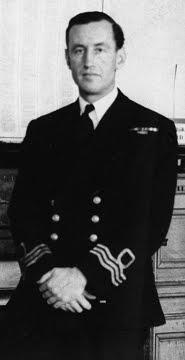
So it all comes back to Commander Ian Fleming and James Bond.
Fleming rightly did not want to join the oppressively lemming mechanized British Army as a Sandhurst graduate, this is how bureaucracies ruin good things like tanks. Fleming went to work instead for Naval Intelligence where he lead the Dunkirk rescue, and sent agents to ascertained the beach defenses for D-Day. It was his friend Sidney Cotton's 11th PRU photo recon planes and Fleming's own 30 Assault Unit intelligence-gathering "Red Indian" commandos that found the V-1 and V-2 sites so the RAF could bomb them so they could not interfere with the cross-channel invasion that General Bradley was talking about.
Moreover, after seeing how individual creativity and initiative can utilize mechanical advantage as 2IC of British Naval Intelligence in WW2, Fleming becomes a best-selling book and movie author of the secret agent 007 James Bond series where he has myriad gadgets--like the armored Aston-Martin with oil slicks, smokescreens, machine guns---and cars can even fly as seen in the children's story Chitty, Chitty Bang, Bang. He has a flamethrower tank in Dr. No. Thus, Fleming's characters can still keep going in the face of enemy fire--and prevail--exactly what we needed on D-Day on Omaha beach. Notice we had some of this technogadgetry in the DD swimming Sherman tanks at Utah beach and we were the most successful there. What saved us at Omaha beach was the naval destroyer with guns; itself a technomarvel when it was first introduced.
We need to take our M113 Gavins and light mechanize our Light, Airborne,
www.combatreform.org/itmaneuversabattalion.htm
Air Assault
www.combatreform.org/airassaulttanksnoexcuse.htm
and Special Operations units...
www.combatreform.org/reconinforce.htm
...so we can fulfil Bradley's promise and start to live up to Fleming and Hobart's visions.
It's not enough to READ about great men, we must LIVE like great men by doing what they are telling us to do. Both General Bradley and Commander Fleming are telling us to get sapper tanks. THAT is what history is for.
This is what we must learn from TECHNOHISTORY.
FEEDBACK!
